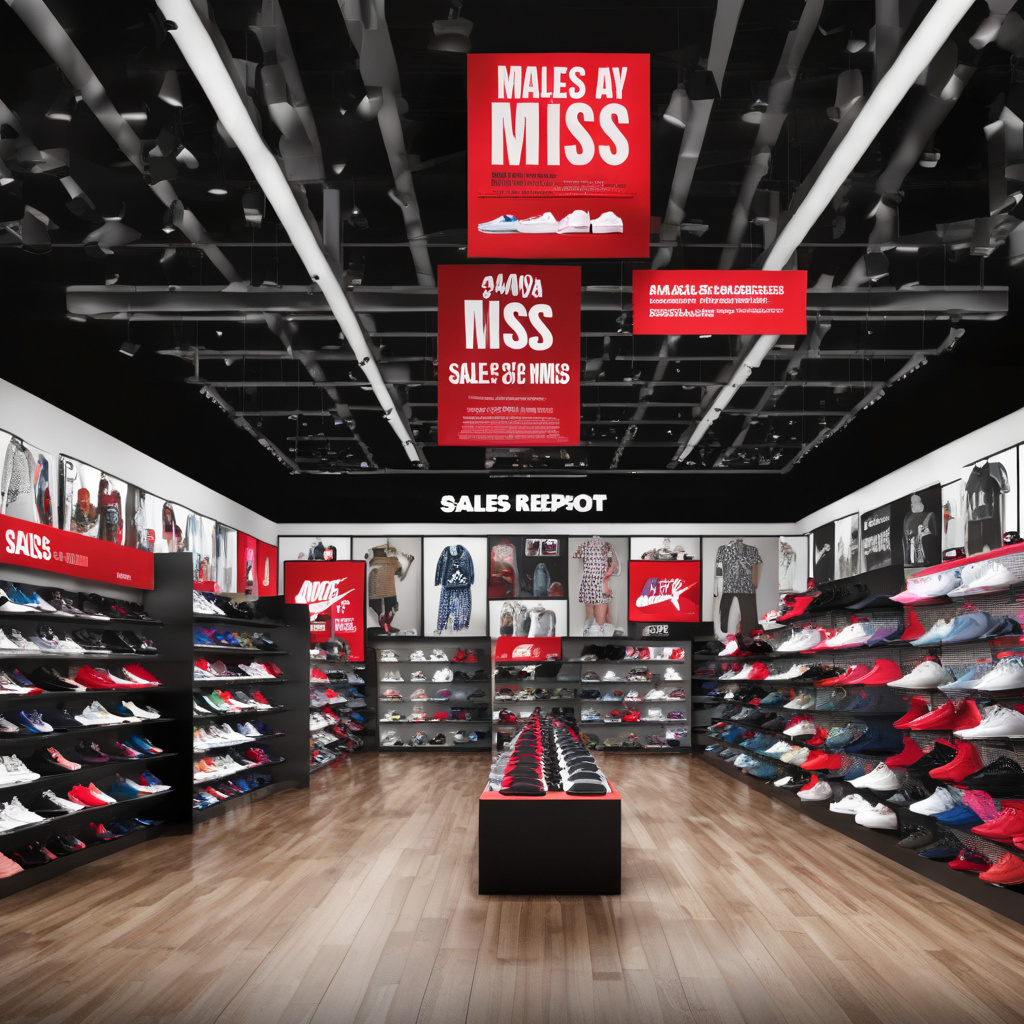Foot Locker Sales Miss Ahead of Dick’s Sporting Goods Purchase
Foot Locker, a leading retailer in athletic footwear and apparel, has reported disappointing sales figures that may raise red flags for Dick’s Sporting Goods as it prepares to finalize its $2.4 billion acquisition of the struggling company. The current financial landscape reveals a troubling pattern for Foot Locker, which is experiencing a notable decline in sales, presenting challenges for the retail giant that aims to integrate the brand into its operations.
The latest quarterly earnings report from Foot Locker paints a stark picture. Sales have fallen short of expectations, marking a significant downturn in consumer demand for athletic footwear, which has long been the company’s primary revenue driver. In the most recent quarter, Foot Locker reported a 10% decrease in same-store sales, which is particularly concerning given the competitive nature of the retail market and the increasing dominance of e-commerce.
This decline in sales is not merely a reflection of temporary market fluctuations; it signals deeper issues within Foot Locker’s business model. Analysts point to various factors contributing to this downturn, including shifts in consumer preferences, inventory mismanagement, and increased competition from both traditional sporting goods retailers and online platforms. Additionally, the rise of direct-to-consumer brands has further fragmented the market, making it difficult for established retailers like Foot Locker to maintain their foothold.
As Dick’s Sporting Goods approaches the completion of its acquisition, it must carefully assess the implications of Foot Locker’s financial struggles. The $2.4 billion price tag reflects not only the company’s brand value but also its potential for recovery and integration into Dick’s existing operations. However, given the current sales trajectory, it is essential for Dick’s to have a robust strategy to turn Foot Locker around.
A critical element to consider is how Dick’s Sporting Goods plans to revitalize Foot Locker’s brand and improve its sales performance. One potential approach could involve a deeper focus on e-commerce and digital marketing, areas in which Foot Locker has lagged behind its competitors. The retail landscape has seen a seismic shift towards online shopping, and consumers are increasingly seeking convenience. By investing in a more sophisticated online platform and enhancing its digital presence, Foot Locker could attract a broader audience and drive sales.
Moreover, the integration process will demand a thorough evaluation of Foot Locker’s product offerings. There is a growing trend among consumers towards sustainability and ethical sourcing in their purchasing decisions. Dick’s Sporting Goods could capitalize on this by introducing more eco-friendly products and promoting brands that align with these consumer values. By refreshing the product line and focusing on what customers truly want, Foot Locker can potentially regain market share lost to competitors.
Additionally, the acquisition opens up opportunities for cross-promotion between the two retailers. Dick’s Sporting Goods has a robust supply chain and established vendor relationships that could benefit Foot Locker. By leveraging these connections, Dick’s could streamline Foot Locker’s inventory management and enhance its operational efficiency, ultimately improving profitability.
However, the challenges do not end with product offerings and digital strategies. Foot Locker’s existing store footprint will also require careful consideration. With the rise of e-commerce, many brick-and-mortar stores are struggling to stay relevant. Dick’s Sporting Goods must evaluate which locations are viable for Foot Locker and which may need to be closed or repurposed. This strategic decision-making will be crucial to minimize operational costs while maximizing Foot Locker’s potential.
In conclusion, Foot Locker’s declining sales present both challenges and opportunities as Dick’s Sporting Goods moves forward with its acquisition plans. While the $2.4 billion investment reflects confidence in Foot Locker’s potential, the path to revitalization will require innovative strategies, a focus on consumer trends, and a willingness to adapt in a rapidly changing retail environment. The retail landscape is unforgiving, and only time will tell if Dick’s Sporting Goods can successfully navigate these waters to restore Foot Locker to its former glory.
retailnews, Dick’sSportingGoods, FootLocker, acquisitions, retailtrends
